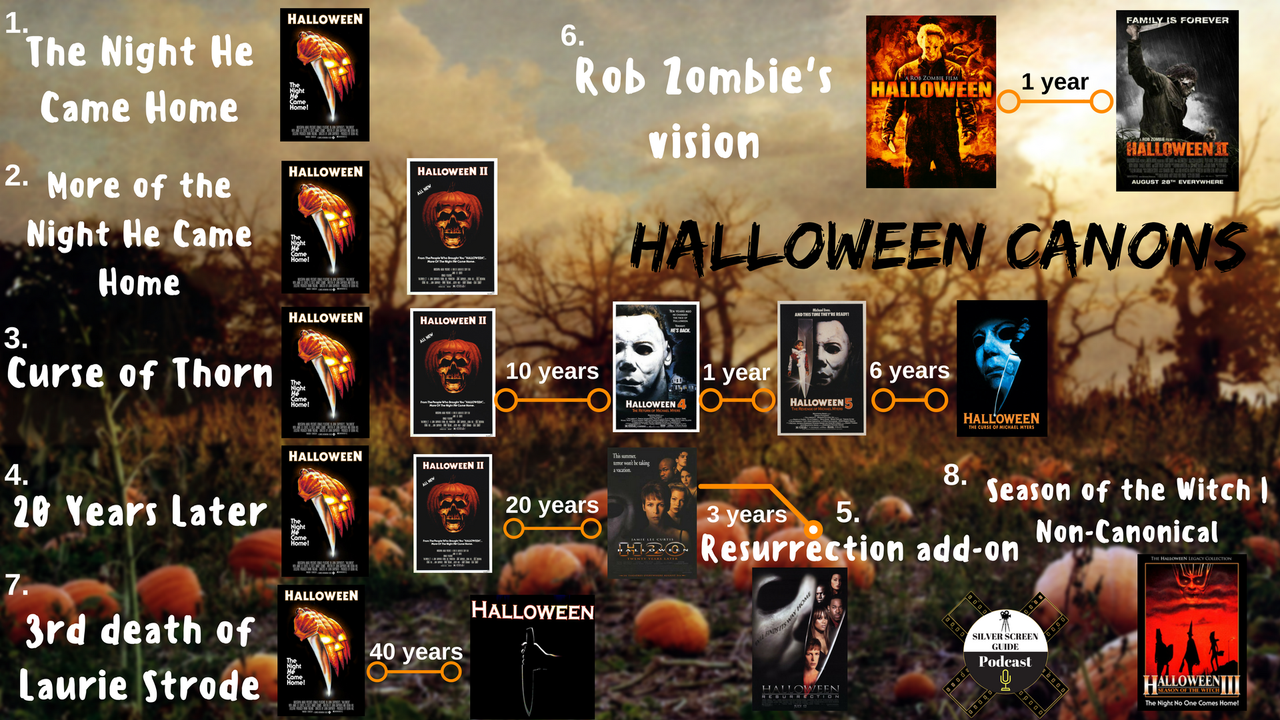Unraveling The Mysteries Of Halloween: A Chronological Journey
Halloween is a celebration steeped in history, folklore, and tradition. Its origins date back thousands of years, evolving through various cultures and customs to become the event we know and love today. As we journey through the Halloween chronological timeline, we uncover the fascinating evolution of this beloved holiday, from ancient rituals to modern-day festivities. Join us as we explore the intriguing moments that have shaped Halloween's identity over the centuries.
The celebration of Halloween, also known as All Hallows' Eve, has its roots in the ancient Celtic festival of Samhain, which marked the end of the harvest season and the onset of winter. This time of year was believed to blur the lines between the living and the dead, allowing spirits to roam the earth. The Halloween chronological narrative reveals how these ancient beliefs transformed over time, leaving a lasting impact on our contemporary customs, including trick-or-treating, costume parties, and spooky decorations.
As we delve deeper into the Halloween chronological timeline, we also recognize the cultural influences that have shaped the holiday across different regions. From the superstitions and rituals of the Celts to the commercialization of Halloween in modern-day America, each chapter in this timeline is rich with stories that highlight the holiday's evolution. So, what are the key milestones in Halloween's history that have contributed to its current form? Let's take a closer look.
What Are the Origins of Halloween?
The origins of Halloween can be traced back to the ancient Celtic festival of Samhain, which was celebrated on the night of October 31st. This festival marked the end of the harvest season and the beginning of winter. It was believed that during Samhain, the boundaries between the living and the dead were blurred, and the spirits of deceased ancestors could return to the earth. People would light bonfires and wear costumes to ward off these wandering spirits.
How Did Samhain Influence Halloween?
Samhain played a crucial role in shaping many Halloween traditions. The Celts believed that the presence of otherworldly spirits on this night could bring both good and bad fortune. To appease these spirits, they would leave offerings of food and drinks outside their homes. Over time, these customs evolved into the modern practice of trick-or-treating, where children go door-to-door asking for candy.
What Other Cultures Contributed to Halloween's Evolution?
As the centuries passed, Halloween began to incorporate elements from various cultures. The Roman festival of Pomona, celebrating the goddess of fruits and seeds, contributed the tradition of bobbing for apples, which remains a popular Halloween game today. Similarly, the Catholic Church introduced All Saints' Day, celebrated on November 1st, which aimed to honor saints and martyrs. The night before became known as All Hallows' Eve, eventually shortening to Halloween.
How Did Halloween Spread to America?
Halloween made its way to America in the 19th century, primarily through Irish and Scottish immigrants fleeing the Great Famine. They brought with them their traditions and customs, including the practice of carving pumpkins, which replaced the turnips used in their homeland. The arrival of these immigrant communities helped to popularize Halloween celebrations in the United States.
When Did Trick-or-Treating Become Popular?
Trick-or-treating, as we know it today, gained popularity in the United States in the 1920s and 1930s. However, the practice of going door-to-door for food and treats has deeper historical roots, with various cultures engaging in similar customs. In the mid-20th century, trick-or-treating became a staple of Halloween festivities, solidifying its place in the holiday's chronological timeline.
What Role Did Commercialization Play in Halloween's Modern Identity?
The commercialization of Halloween exploded in the latter half of the 20th century, transforming it into a multi-billion dollar industry. Retailers began to capitalize on the holiday by selling costumes, decorations, and candies, further embedding Halloween into American culture. This shift also led to the emergence of haunted houses, Halloween parties, and themed events, which continue to thrive today.
What Are the Modern Traditions of Halloween?
Today, Halloween is celebrated with a variety of traditions that reflect its rich history. Some of the most popular activities include:
- Costume parties, where people dress up in creative and spooky outfits
- Trick-or-treating, where children go door-to-door collecting candy
- Decorating homes with jack-o'-lanterns, cobwebs, and other spooky décor
- Attending haunted houses and ghost tours
- Hosting Halloween-themed events and gatherings
How Does Halloween Vary Around the World?
While Halloween is predominantly celebrated in the United States, various countries have their own unique traditions that coincide with this time of year. For instance, in Mexico, the Day of the Dead (Día de los Muertos) is celebrated to honor deceased loved ones, incorporating colorful decorations and festive activities. In other cultures, similar festivals exist that emphasize remembrance and the supernatural, showcasing the global fascination with the themes of life, death, and the afterlife.
What Is the Future of Halloween?
As we move forward, Halloween continues to evolve, adapting to changing cultural norms and societal shifts. With the rise of technology and social media, new trends are emerging, such as virtual Halloween parties and online costume contests. The Halloween chronological journey remains fluid, with each year bringing fresh ideas and innovations that keep the spirit of the holiday alive.
In conclusion, Halloween is a celebration that has traversed centuries and cultures, evolving into the festive occasion we know today. By examining its Halloween chronological timeline, we gain a deeper appreciation for the traditions and rituals that have shaped this holiday. Whether you’re donning a costume, carving a pumpkin, or indulging in candy, Halloween offers a unique opportunity to connect with history and celebrate the magic of the season.
Discovering The Magic Of Kate Spade Surprise: A Celebration Of Style And Elegance
Amy Adams And Her Iconic Red Hair: A Journey Through Style
Unmasking The Actor Behind Deadpool: A Journey Into The World Of Ryan Reynolds


